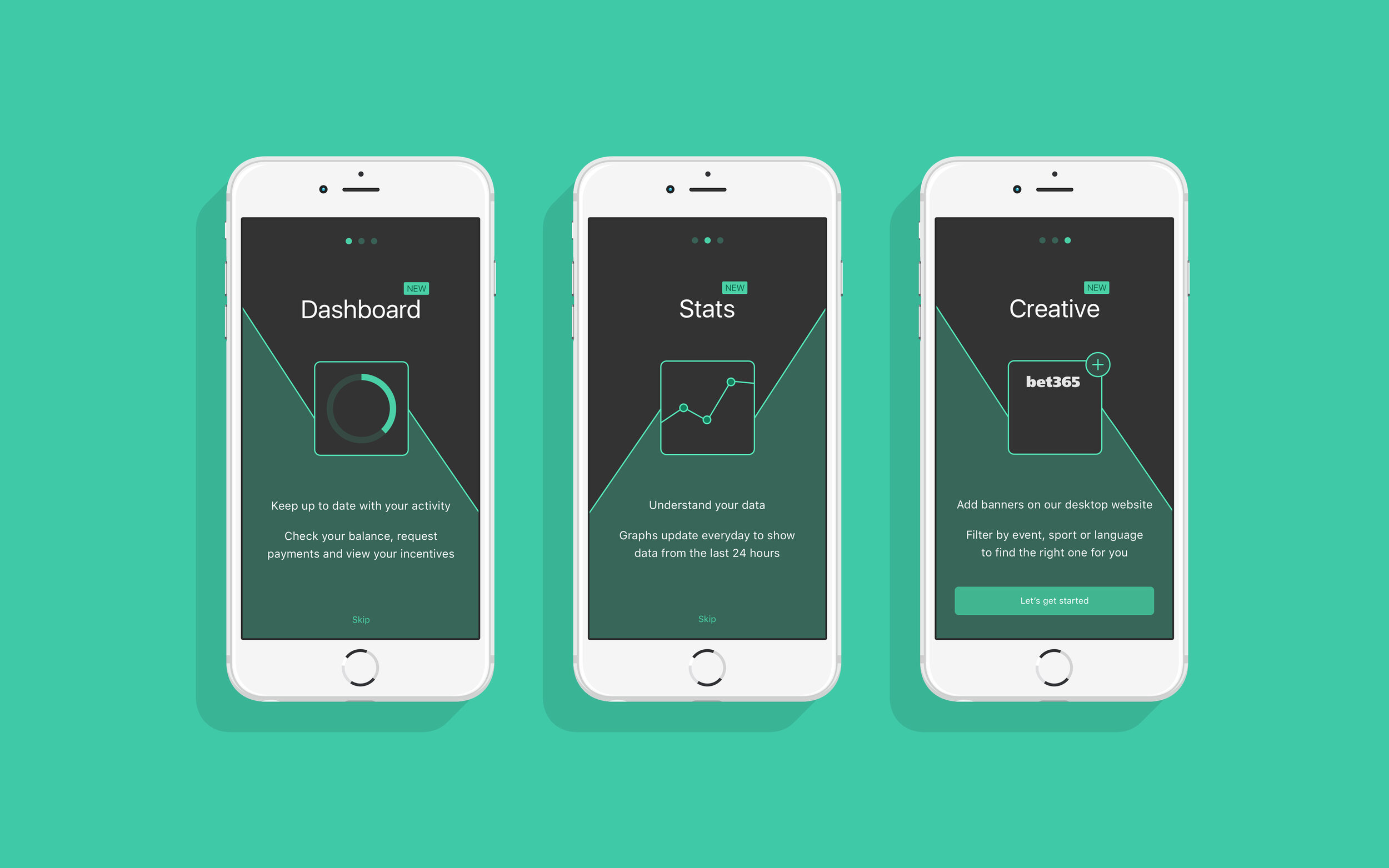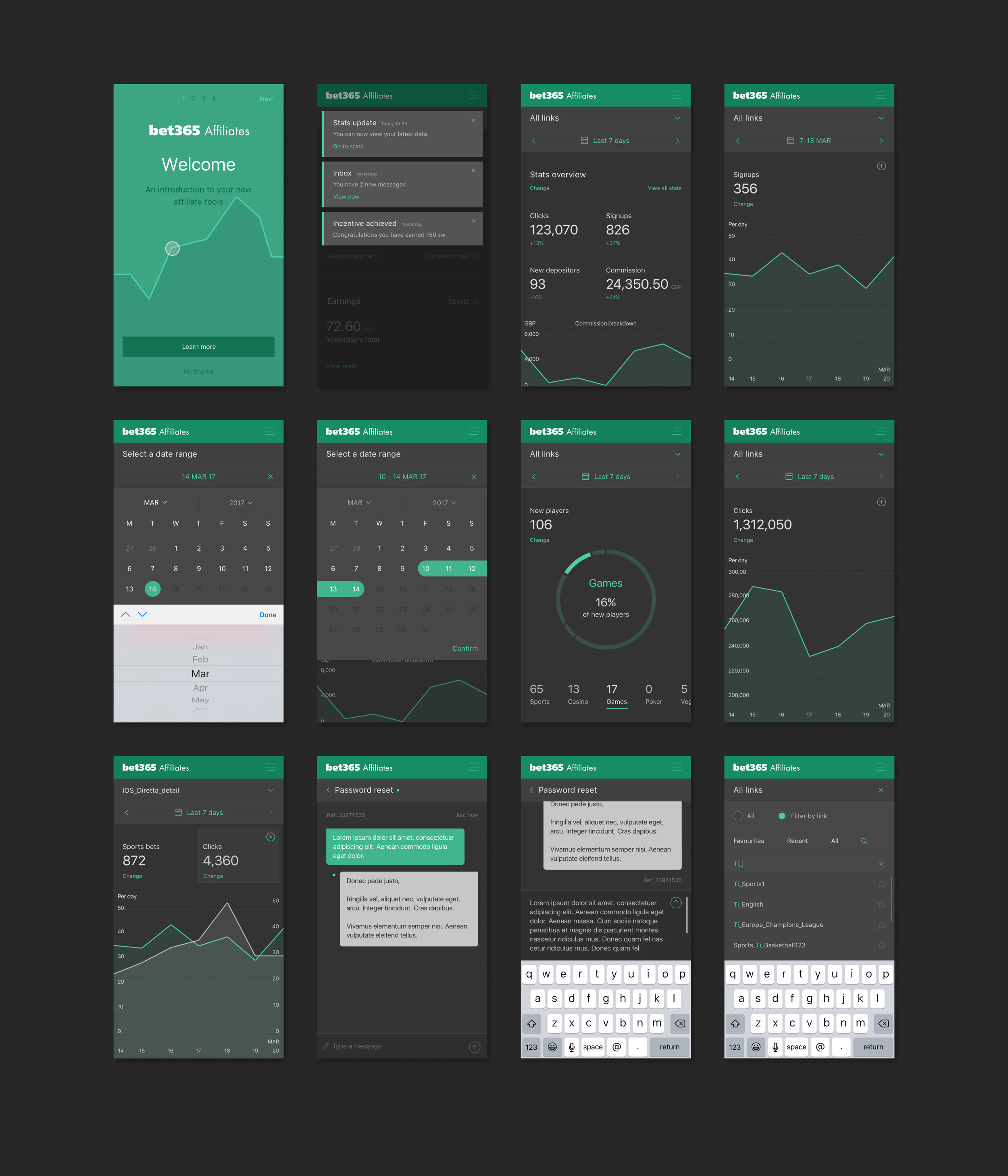Affiliate marketing hub
bet365 is the world’s largest online gaming and sports betting group. Since being founded in 2000 it has grown to have over 5,000 employees worldwide.
Alongside it’s world renowned Sportsbook product, it runs a successful Affiliate marketing product that generates new business for bet365, whilst earning affiliated partners 30% of their customer’s overall turnover.
This project involved developing a new responsive service, with accompanying app, to provide bet365 affiliates with the best service on the market - allowing customers to easily generate, track and manage marketing campaigns from any device.
The process involved:
Coordinating with product management and affiliate stakeholders to get to know the various requirements and understand the product space.
As the sole designer on the project I lead the product discovery to identify user segments and better understand their needs.
Researching and validating all new concepts. I used a range of research methods to get to grips with business needs and validated any new ideas with the people that would be using the service.
I worked closely with software and test engineers to prepare designs for implementation, unfortunately this project was not yet in the development process when I left the company in 2018.

Identifying problems through research
bet365’s affiliate marketing programme was over ten years old and the stakeholders involved had a vast amount of ideas for improvements. As a consequence, my initial research involved getting to know the product in detail by conducting stakeholder interviews and customer focus groups to understand the various problem areas.
Some of these included:
Users had no way of adding content or keeping track of their campaigns on mobile devices as they only provided a desktop service. This was unsuitable for the amount of mobile bet365 users and the company’s mobile first approach.
During focus groups we identified that user’s had no way of analysing the success of a marketing campaign, which could help them make informed decisions when adding marketing to their website.
User’s struggled to provide relevant content to a global audience and the existing service offered no way of tailoring campaigns via region.
Creating user personas
As the product involves tracking and managing marketing campaigns, I was able to access a range of data that indicated how customers used the existing service. I analysed this to create user personas and ideate improvements to the user experience. Users ranged from people who added the occasional piece of content to their personal website, to companies who generate income from masses of paid marketing. This created a challenging range of personas and meant the service had to simplify a complex amount of live data and account management.
Secondary research
A stakeholder requirement was for the product to enable the live tracking of campaigns, so that users could analyse performance and effectively manage or edit content. Consequently, I spent time conducting market and competitor analysis to understand how other companies innovated in this space.
Ideation/design process
Understanding customer journeys
Following a period of analysis, brainstorming and idea generation with stakeholders I considered the core UX flow for the new mobile journey. This was essential for this project as so many of our ideas were entirely new and could not currently be accessed from a mobile device.
Customers used the product in a number of ways, whether it be adding marketing content, analysing data or keeping track of an incentive. We had to iron out navigational problems with the old site and simplify how users add content to their own website..
Wire framing ideas
In order to quickly explore ideas and easily make alterations all concepts involved low fidelity wire framing.
The process allows you to reimagine an entire process at a high level and connect user journeys. This is a great starting point to discuss ideas or design concepts. They can also be used to start testing ideas on other people and customers.
Developing a prototype
I teamed up with an engineer to create a number of prototypes of new feature ideas, including a stats analysis service. Due to the complex nature of the product, this step was an essential way of visualising real data - which is hard to design for when only using mock information.
Working prototypes also helped validate new ideas through user testing. We invited a number of affiliates to join usability testing sessions which helped to refine each area of the product.
